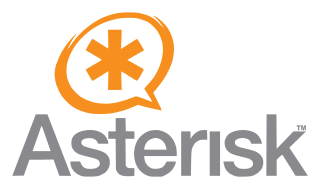| Initial release | April 3, 2017 |
|---|---|
| Stable release | 8.5.4 [1] / December 8, 2023 |
| Repository | github |
| Written in | C, Python |
| Operating system | Linux, OpenBSD, FreeBSD, NetBSD |
| Predecessor | Quagga |
| License | GNU GPLv2 |
| Website | frrouting |
Free Range Routing or FRRouting or FRR is a network routing software suite running on Unix-like platforms, particularly Linux, Solaris, OpenBSD, FreeBSD and NetBSD. It was created as a fork from Quagga. FRRouting is distributed under the terms of the GNU General Public License v2 (GPL2).
FRR provides implementations of the following protocols:
It also provides alpha implementations of:
FRRouting broke away from the free routing software Quagga. Several Quagga contributors, including Cumulus Networks, 6WIND, and BigSwitch Networks, citing frustration about the pace of development, decided to fork the software and form their own community. [2]
A network operating system (NOS) is a specialized operating system for a network device such as a router, switch or firewall.
The Routing Information Protocol (RIP) is one of the oldest distance-vector routing protocols which employs the hop count as a routing metric. RIP prevents routing loops by implementing a limit on the number of hops allowed in a path from source to destination. The largest number of hops allowed for RIP is 15, which limits the size of networks that RIP can support.

Asterisk is a software implementation of a private branch exchange (PBX). In conjunction with suitable telephony hardware interfaces and network applications, Asterisk is used to establish and control telephone calls between telecommunication endpoints such as customary telephone sets, destinations on the public switched telephone network (PSTN) and devices or services on voice over Internet Protocol (VoIP) networks. Its name comes from the asterisk (*) symbol for a signal used in dual-tone multi-frequency (DTMF) dialing.
Filesystem in Userspace (FUSE) is a software interface for Unix and Unix-like computer operating systems that lets non-privileged users create their own file systems without editing kernel code. This is achieved by running file system code in user space while the FUSE module provides only a bridge to the actual kernel interfaces.
XORP is an open-source Internet Protocol routing software suite originally designed at the International Computer Science Institute in Berkeley, California. The name is derived from eXtensible Open Router Platform. It supports OSPF, BGP, RIP, PIM, IGMP, OLSR.
The Common Address Redundancy Protocol or CARP is a computer networking protocol which allows multiple hosts on the same local area network to share a set of IP addresses. Its primary purpose is to provide failover redundancy, especially when used with firewalls and routers. In some configurations, CARP can also provide load balancing functionality. CARP provides functionality similar to Virtual Router Redundancy Protocol (VRRP) and to Cisco Systems' Hot Standby Router Protocol (HSRP). It is implemented in several BSD-based operating systems and has been ported to Linux (ucarp).

OpenBGPD, also known as OpenBSD Border Gateway Protocol Daemon, is a server software program that allows general purpose computers to be used as routers. It is a Unix system daemon that provides a free, open-source implementation of the Border Gateway Protocol version 4. This allows a machine to exchange routes with other systems that speak BGP.
Netlink is a socket family used for inter-process communication (IPC) between both the kernel and userspace processes, and between different userspace processes, in a way similar to the Unix domain sockets available on certain Unix-like operating systems, including its original incarnation as a Linux kernel interface, as well as in the form of a later implementation on FreeBSD. Similarly to the Unix domain sockets, and unlike INET sockets, Netlink communication cannot traverse host boundaries. However, while the Unix domain sockets use the file system namespace, Netlink sockets are usually addressed by process identifiers (PIDs).
OpenOSPFD is an ISC licensed implementation of the Open Shortest Path First Protocol. It is a network routing software suite which allows ordinary general purpose computers to be used as routers exchanging routes with other computer systems speaking the OSPF protocol.
BIRD is an open-source implementation for routing Internet Protocol packets on Unix-like operating systems. It was developed as a school project at the Faculty of Mathematics and Physics, Charles University, Prague, and is distributed under the GNU General Public License.
Quagga is a network routing software suite providing implementations of Open Shortest Path First (OSPF), Routing Information Protocol (RIP), Border Gateway Protocol (BGP) and IS-IS for Unix-like platforms, particularly Linux, Solaris, FreeBSD and NetBSD.
A Bluetooth stack is software that is an implementation of the Bluetooth protocol stack.
Tinc is an open-source, self-routing, mesh networking protocol and software implementation used for compressed and encrypted virtual private networks. It was started in 1998 by Guus Sliepen, Ivo Timmermans, and Wessel Dankers, and released as a GPL-licensed project.

Junos OS is a FreeBSD-based network operating system used in Juniper Networks routing, switching and security devices.

The Babel routing protocol is a distance-vector routing protocol for Internet Protocol packet-switched networks that is designed to be robust and efficient on both wireless mesh networks and wired networks. Babel is described in RFC 8966.
OpenConnect is a free and open-source cross-platform multi-protocol virtual private network (VPN) client software which implement secure point-to-point connections.

Open vSwitch, sometimes abbreviated as OVS, is an open-source implementation of a distributed virtual multilayer switch. The main purpose of Open vSwitch is to provide a switching stack for hardware virtualization environments, while supporting multiple protocols and standards used in computer networks.

The Software for Open Networking in the Cloud or alternatively abbreviated and stylized as SONiC, is a free and open source network operating system based on Linux. It was originally developed by Microsoft and the Open Compute Project. In 2022, Microsoft ceded oversight of the project to the Linux Foundation, who will continue to work with the Open Compute Project for continued ecosystem and developer growth. SONiC includes the networking software components necessary for a fully functional L3 device and was designed to meet the requirements of a cloud data center. It allows cloud operators to share the same software stack across hardware from different switch vendors and works on over 100 different platforms. There are multiple companies offering enterprise service and support for SONiC.